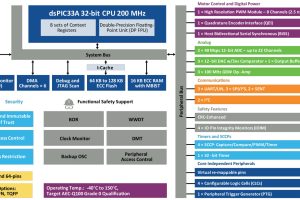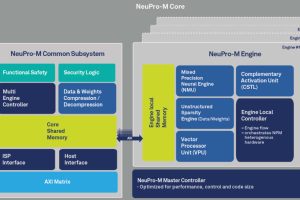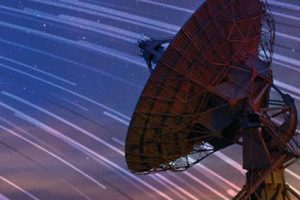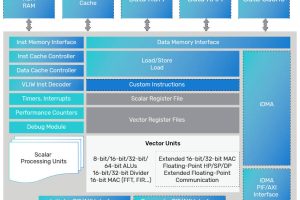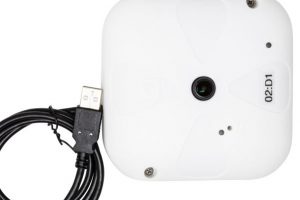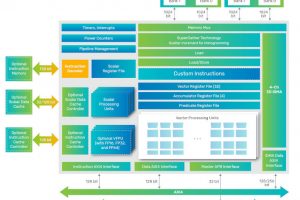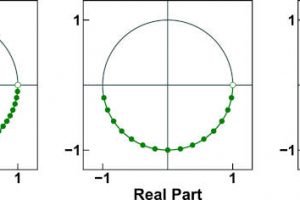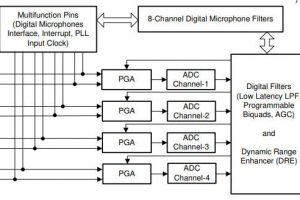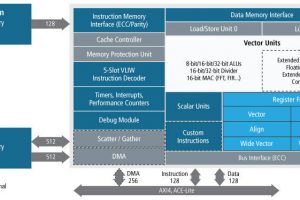Microchip Technology has announced a 32bit 200MHz version of its dsPIC33 series of DSP-heavy MCUs. dsPIC33A, as the family will be called, is aimed at fast closed-loop control of PSUs and motors. As with earlier dsPIC processors, the parts remain a combination of CPU and maths accelerator (‘DSP engine’), rather than a pure DSP architecture. In this fifth generation, the ...
Tag Archives: dsp
Ceva adds cores and generative AI to neural processing IP portfolio
Ceva has filled-out its NeuPro-M family of neural processing units, and boosted its architecture for generative AI algorithms. “NeuPro-M NPU architecture and tools have been redesigned to support transformer networks in addition to convolutional neural networks,” according to the company. “This enables applications leveraging the capabilities of generative and classic AI to be developed and run on the NeuPro-M NPU.” ...
IMS: 10GHz bandwidth quad-channel Tx Rx analogue front-end
Analog Devices has released some details of a 10GHz bandwidth analogue front-end, possibly to be revealed in full at IMS in San Diego this week. The 16nm CMOS device is said to have four 12bit 20Gsample/s ADCs and four 16bit 28Gsample/s DACs – and seems like a faster cousin of the 28nm AD9081 released a few years ago – if ...
DSP IP for radar, lidar and comms
Cadence has unveiled intellectual property for two DSP, aimed at asics for radar, lidar and communications processing. Called ConnX 110 and ConnX 120, the blocks share the instruction set of the existing ConnX B10 and B20 DSPs. The 110 version offers 128bit SIMD for math operations based on 8, 16 and 32bit fixed-point and half-, standard- and double-precision floating-point. The ...
Complete camera-to-cloud people counting eval kit
Analog Devices has introduced a evaluation kit for people-counting using one of its DSPs. In a case and designed to be attached to a ceiling looking straight down, the kit includes a camera and everything needed to get the counted data to the cloud. Its main ingredients are a particular DSP from its Blackfin range, the ADSPBF707BBCZ4-EGE, and a people counting ...
High-end and always-on DSP cores for vision processing and AI
Cadence is aiming at high-end and always-on applications with DSP intellectual property for embedded vision and AI. There are two cores: Vision Q8 for multi-camera automotive and mobile markets 1,024bit SIMD and 3.8Top/s 2x performance and memory bandwidth compared with the Vision Q7 Vision P1 for always-on and smart sensor consumer applications, as well as AR and VR glasses. 128bit ...
DSP: Inverse chirp z-transform, where it works and doesn’t work
The inverse chirp z-transform (ICZT) can be used with chirp contours that perform partial or multiple revolutions on the unit circle, according to engineers at Iowa State University. Last year, Iowa State engineers Alexander Stoytchev and Vladimir Sukhoy created a closed-form solution for the ICZT, which generalises the inverse fast Fourier transform (IFFT) off the unit circle in the complex ...
XMOS reveals AI processor for IoT
Bristol-based XMOS has developed a processor for artificial intelligence processing in IoT products, combining AI processing, DSP, control and IO. It has been branded xcore.ai and has: 16 real-time logical cores, with support for scalar/float/vector instructions IO ports with nanosecond latency for real-time response Support for binarised (1bit, see below), 8bit, 16 bit and 32bit neural network inference Multi-modal data capture ...
ADC offers multi-microphone beam-forming to ease host processor load
Texas Instruments is aiming at beam-forming microphones with four-channel ADC that can connect to four analogue microphones or eight digital microphones, or a combination of the two. “Smart home systems face challenges with far-field audio capture,” according to TI. “In today’s systems, a limited number of microphones and restricted signal processing capability make it difficult to capture and understand voice ...
Cadence ups DSP throughput for 5G comms, and automotive radar and lidar
Cadence has extended the pipeline within its ConnX DSP IP family
 Electronics Weekly Electronics Design & Components Tech News
Electronics Weekly Electronics Design & Components Tech News
